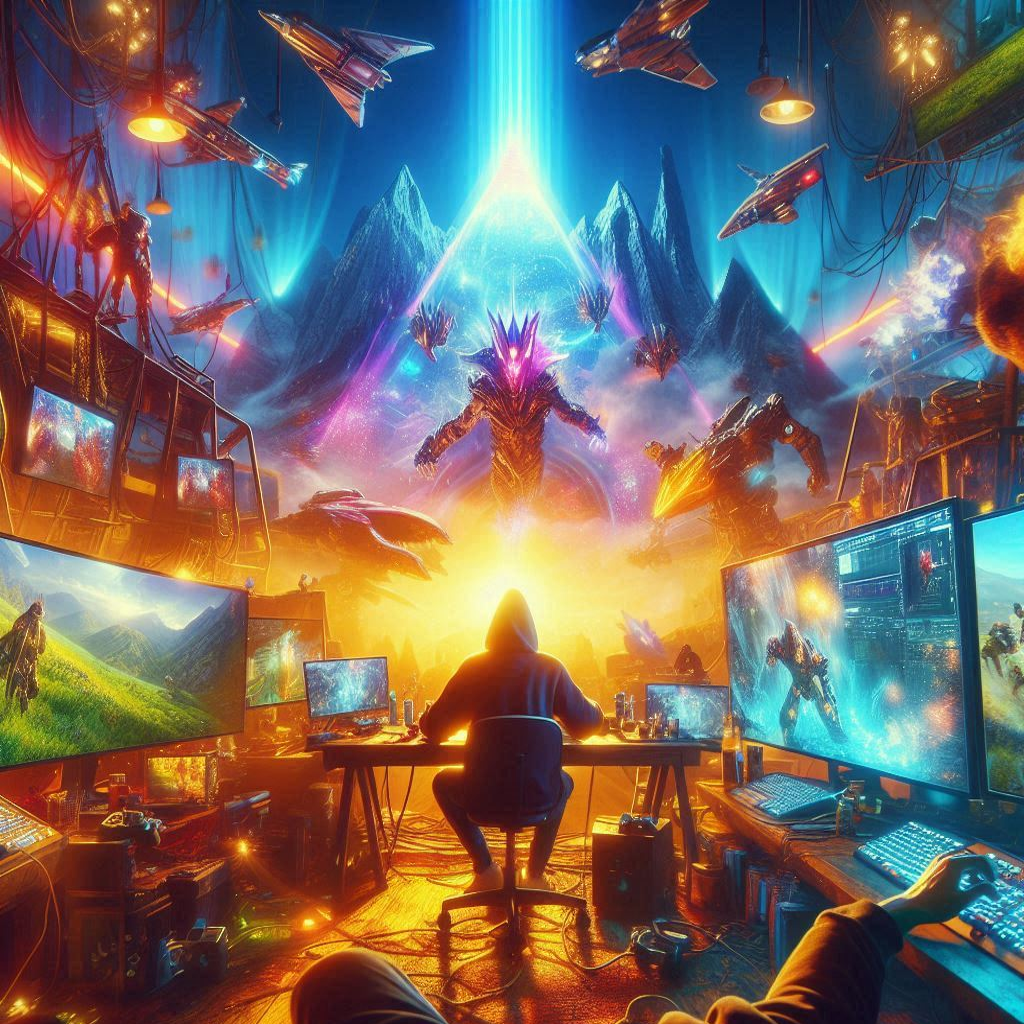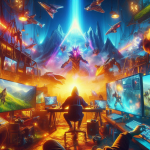Games are a big part of our lives, and they come in many shapes and sizes. But before you can play a game, it often has a rating. This is a way to tell if a game is right for you based on its content. Game ratings are important because they help parents decide what games their kids can play. Some common rating systems are the ESRB (Entertainment Software Rating Board) and PEGI (Pan European Game Information).
Censorship, on the other hand, is when something is changed or removed from a game. This can happen for various reasons, like making sure the game is acceptable for a certain age group or to avoid offending some group of people. Censorship can change how a game is made and sometimes can make a game less fun.
Together, game ratings and censorship can shape the video game industry. When games are rated, developers may try to change their content to get a better rating. This can affect creativity, as some ideas might be removed or toned down. Censorship can also lead to conflicts between what players want and what is allowed.
In conclusion, game ratings and censorship are important parts of the gaming world. They help keep the gaming fun and safe but can also limit creativity. Understanding how these two things impact the industry is key to knowing how games are made and what you can play.
Glossary:
1. Game Ratings – A system that tells you if a game is suitable for certain ages.
2. Censorship – Changing or removing parts of a game to make it acceptable.
3. ESRB – A group that rates video games in North America.
4. PEGI – A group that provides ratings for games in Europe.
5. Developers – People who create video games.
The Impact of Game Ratings and Censorship on the Industry
Video games have become a significant part of our culture and entertainment. However, the way these games are rated and sometimes censored can greatly affect everything from their sales to their popularity. Understanding this issue means looking at several key terms and how they play a role in the gaming world.
Understanding Key Terms
- Game Ratings: These are classifications given to video games that indicate the age group they are suitable for. Ratings are provided by organizations like the ESRB (Entertainment Software Rating Board) in the USA and PEGI (Pan European Game Information) in Europe.
- Censorship: This refers to the suppression or alteration of content in games based on what may be deemed inappropriate or offensive. This can happen for various reasons, including government regulations or cultural sensitivities.
- Content Descriptors: These are additional notes that accompany game ratings and explain the reasons behind a specific rating, such as violence, sexual content, or strong language.
The Role of Game Ratings
Game ratings help inform consumers, especially parents, about the content of a game. For instance, if a game is rated M for Mature, it likely contains elements that may not be suitable for younger audiences. As one expert noted:
“Ratings serve as a guideline to help consumers make informed decisions about their purchases.”
Moreover, ratings can have direct financial implications for game developers and publishers. A higher rating can limit the potential audience, while a lower rating can sometimes increase sales due to broader appeal. For example, children’s games usually receive a rating of E for Everyone, which allows them to reach a younger demographic.
Censorship in the Gaming Industry
Censorship can significantly alter how a game is experienced. In some cases, games may be heavily edited to meet the standards of different markets. For instance, a game that involves graphic violence may be toned down for release in a country with strict laws regarding violent content. As stated by a game industry analyst:
“Censorship can lead to a loss of creative vision, as developers often must alter their work to comply with regulations.”
This raises important questions about artistic freedom versus public safety and cultural norms.
Possible Solutions to Censorship Issues
- Transparent Guidelines: Establish clearer guidelines for what constitutes censorship, helping developers understand the limits within which they must operate.
- Age and Content Awareness: Promote awareness among consumers regarding game ratings and encourage informed decision-making, which can, in turn, reduce the demand for censorship.
- Dialogue with Policymakers: Encourage developers to engage in discussions with lawmakers about the implications of censorship and the importance of maintaining creative integrity.
Challenges Faced by the Industry
The gaming industry frequently encounters challenges when it comes to ratings and censorship. There are varying standards globally, which can create confusion and frustration for developers. What is acceptable in one country may not be in another. This is particularly evident with games that address controversial themes.
Additionally, there is the ongoing debate about whether game ratings accurately reflect a game’s content. Many argue that current rating systems fall short, as they may not capture the nuances of complex narratives or visual storytelling.
The Future of Game Ratings and Censorship
As gaming technology evolves and the audience diversifies, the systems of ratings and censorship will need to adapt as well. There may be a shift towards more holistic approaches that consider context rather than merely scoring content on a numerical scale.
Regardless of how these systems will change, the impact of game ratings and censorship will remain a critical area of concern for developers, consumers, and policymakers alike. Ensuring that these systems reflect the realities of gaming today is paramount for the future of the industry.
What are game ratings?
Game ratings are classifications that indicate the suitability of a video game for different age groups. These ratings are typically assigned by regulatory bodies and help consumers make informed decisions about the content and appropriateness of games for themselves, or for children.
How do game ratings impact the industry?
Game ratings can significantly influence the marketing and sales of video games. Titles with mature ratings may be restricted in how they are promoted, limiting their accessibility to younger audiences. Conversely, games with family-friendly ratings may reach a wider audience, boosting sales and fostering a broader appeal.
What is the role of censorship in the gaming industry?
Censorship in the gaming industry involves the modification or removal of content deemed inappropriate or offensive. This is often implemented to comply with local laws or cultural norms. Censorship can affect game design, narrative, and even character development, influencing the overall experience of the game.
Are all countries’ game rating systems the same?
No, different countries have their own game rating systems, which can vary widely in criteria and age classifications. This can lead to discrepancies in how games are rated and what content is considered acceptable in different regions.
What are some common reasons for game censorship?
Common reasons for game censorship include graphic violence, sexual content, drug use, and themes that may be considered politically or culturally sensitive. Regulatory bodies or governments may impose bans or demand alterations to content to align with societal values.
How do consumers react to censorship and game ratings?
Consumer reactions to censorship and game ratings can be mixed. Some players may appreciate the guidance provided by ratings, while others may feel that censorship limits artistic expression and reduces the authenticity of the gaming experience. This debate often leads to discussions about freedom of expression in entertainment.
Can game ratings and censorship affect game sales?
Yes, game ratings and censorship can significantly impact game sales. A higher rating may deter some consumers from purchasing a game, while a lower rating can increase its appeal. Similarly, censorship that alters key content may alienate the fanbase, potentially leading to lower sales.
How do developers navigate game ratings and censorship?
Game developers often research and plan for rating and censorship issues during the development process. By understanding the guidelines of rating boards and the potential for censorship in different regions, they can create content that aligns with these requirements, while still delivering a compelling experience.
What impact does online gaming have on ratings and censorship?
Online gaming introduces complex dynamics regarding ratings and censorship, as content can often be updated and changed post-release. Developers may face challenges in ensuring compliance with various rating systems, and real-time player interactions can sometimes lead to content that falls outside of initial ratings, prompting further scrutiny and potential censorship.







